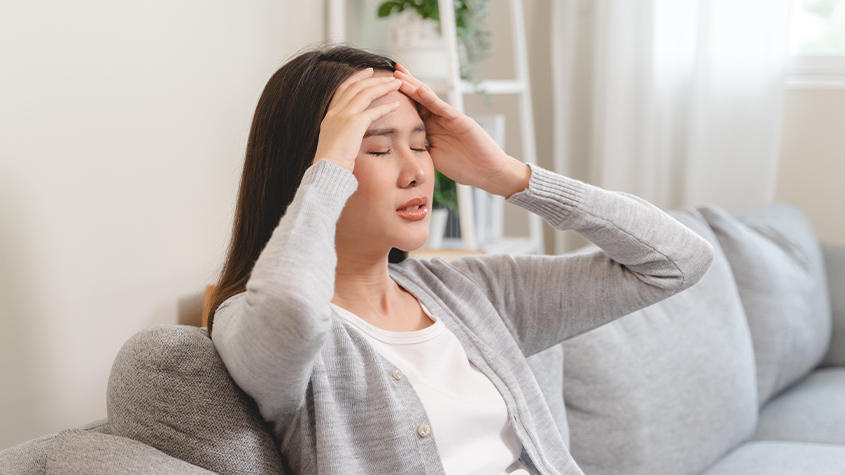
What is Binocular Vision Dysfunction (BVD)?
Binocular Vision Dysfunction occurs when the eyes are slightly misaligned and fail to work together as a team. Instead of merging two images into one clear picture, the brain struggles to combine them, which can lead to a range of discomforts like double vision, headaches, dizziness, neck pain, anxiety, motion sickness, and poor spatial awareness
Common Signs & Symptoms
1. Visual & EyeRelated
- Blurry or double vision
- Night glare or halos
- Difficulty reading or focusing
2. Physical & Neurological
- Neck, shoulder, or back tension
- Tilting head, tripping or bumping into objects
- Nausea, dizziness, or motion sickness
3. Reading & Learning Issues
- Losing place, re-reading lines, and letter merging
- Difficulty concentrating or comprehending text
4. Driving & Spatial Perception
- Trouble judging distances
- Anxiety when driving—especially at night
- Avoiding tasks involving depth perception
5. Anxiety & Mood
- Agoraphobia or panic in crowds
- Everyday anxiety linked to visual distortion
Why It Happens
- Misaligned eyes (strabismus) or inherited binocular control issues
- Head trauma such as concussions or injuries
- Neurological impacts from stroke, Lyme disease, long-COVID, mono
- Age-related changes in eye muscles and focusing capacity
In fact, subtle binocular misalignments affect nearly 20% of adults—and many don’t even recognize the source of their discomfort.


Possible Misdiagnoses
- Because BVD shares symptoms with many conditions, it’s often mistaken for:
- Migraines or vestibular migraines
- ADHD, dyslexia, reading disorders
- Anxiety, panic attacks, agoraphobia
- Neck or spinal misalignment
- Meniere’s disease, BPPV, chronic dizziness
- TMJ disorders, sinus issues, MS
Diagnosis: Screening & Assessment
The most effective way to detect BVD is through a specialized binocular vision evaluation, including:
- A binocular vision questionnaire to score your symptoms
- Tests such as the near-point convergence check


Treatment Options
1. Prism Lens Therapy
Custom prism spectacles adjust how light enters the eyes, helping the brain combine images smoothly—reducing head strain and vision problems quickly
2. Vision Therapy Exercises
A tailored program of in-office and at-home visual exercises strengthens the brain-eye connection, improving coordination and reducing symptoms such as dizziness and double vision
3. Integrated Approach
Combining prism lenses with vision therapy often delivers the best outcomes—significantly improving function and quality of life
Frequently Asked Questions
Q: How quickly can I see improvement?
Many patients experience initial relief—sometimes within the same appointment—and 70–80% symptom reduction within 6–8 weeks using prism lenses
Q: Is BVD only for children?
No. BVD can affect anyone—from those old enough to reliably wear glasses and report symptoms, to seniors experiencing age-related vision changes
Q: Can anxiety be caused by BVD?
Absolutely. Visual confusion and disorientation can directly lead to heightened anxiety, panic attacks, or avoidance behaviors
Q: Will old injuries still impact me?
Yes—head trauma from years ago (even decades) can result in chronic BVD, and treatment is still effective regardless of how long symptoms have persisted.
Why Choose Us at DaufamilyEyecare.com
- Personalized binocular exams integrating questionnaires and alignment testing
- Expertly prescribed prism lenses to align your vision naturally
- Supportive vision therapy tailored to your visual needs and lifestyle
- Collaborative care that addresses both physical and neurological aspects of BVD
Ready to Take the Next Step?
1. Selfscreen using a binocular vision questionnaire—ask us for a digital copy.
2. Schedule a specialized binocular alignment exam at our clinic.
3. Receive your personalized treatment plan, combining prism lenses and vision therapy.
Let Dau Family Eye Care restore clear, comfortable sight—whether you're struggling with reading, driving, headaches, or anxiety linked to your vision. We’re here to help you see and feel your best!





